 January 25, 2018 John E. Ross, KD8IDJ, Editor
| |||||||||
ARRL President Rick Roderick, K5UR, Re-Elected; Barry Shelley, N1VXY, is New CEO Incumbent ARRL President Rick Roderick, K5UR, has been re-elected by the League's Board of Directors for a second term. The Board convened for its Annual Meeting January 19-20 in Windsor, Connecticut. President Roderick, the League's 16th President, received 9 votes, while the only other nominee, New England Director Tom Frenaye, K1KI, received 6 votes.
Chief Financial Officer Barry Shelley, N1VXY, was elected as Chief Executive Officer, replacing Tom Gallagher, NY2RF, who announced his retirement on January 18 after 2 years at ARRL Headquarters. Shelley will serve until the Board selects a new CEO, and is expected to serve in an advisory role to assist with the transition beyond that. The Board has created a CEO Search Committee. Shelley was unopposed as ARRL Board Secretary. ARRL Comptroller Diane Middleton, KC1BQF, was elected Chief Financial Officer, replacing Shelley. ARRL First Vice President Greg Widin, K0GW, was declared re-elected without opposition. Incumbent ARRL Second Vice President Brian Mileshosky, N5ZGT, did not stand for re-election, and Pacific Division Director Bob Vallio, W6RGG, was elected to succeed him. Pacific Division Vice Director Jim Tiemstra, K6JAT, will succeed Vallio as Pacific Division Director. The Vice Director vacancy there will be filled by appointment. Read more. ARRL Board of Directors Agrees to Review of Conduct Code for Directors Meeting January 19-20, the ARRL Board of Directors adopted a motion to a review the entire code of conduct for Board members, known officially as the ARRL Policy on Board Governance and Conduct of Members of the Board of Directors and Vice Directors. ARRL Officers, Directors, and Vice Directors will review the code of conduct and complete a final draft version by mid-May for the July Board meeting.
In the same motion, the Board deleted and suspended, effective immediately, sections that were considered ambiguous and in conflict with the intent of the code of conduct requiring Board members to act in the best interest of the League's membership. The Board also voted unanimously to amend a policy affecting candidates for ARRL elected offices, including Directors and Vice Directors. The new policy calls for candidates to be informed in writing at the outset of the nomination process that decisions of the Board's Ethics and Elections Committee concerning candidate eligibility will be made public unless the candidate requests otherwise. In addition, if the Ethics and Elections Committee rejects a candidate's petition, the candidate may ask that the reason(s) for rejection not be made public. Unless confidentiality is requested within 10 business days, the reason(s) for rejection may be made public.
A proposed addition to the ARRL Articles of Association regarding the personal liability and indemnification of Directors will be reviewed by the Executive Committee, the General Counsel, and ARRL Connecticut corporate counsel. Proposed amendments to the ARRL Bylaws regarding Life Membership were referred to the Administration and Finance Committee for further consideration. It was decided that if these or any additional changes are proposed, they will be made available to the membership and will be accompanied by explanatory "white papers" before the Board considers action on them. In other action, the Board
Read more. Puerto Rico, US Virgin Island Amateurs are International Humanitarian Award Winners The ARRL Board of Directors has conferred the 2018 International Humanitarian Award jointly on the Amateur Radio population of Puerto Rico -- served by ARRL Section Manager Oscar Resto, KP4RF -- and the radio amateurs of the US Virgin Islands, served by ARRL Section Manager Fred Kleber, K9VV. Radio amateurs in Puerto Rico and in the US Virgin Islands aided in the relief and recovery after a punishing hurricane season in the Caribbean.
In a separate motion, the Board recognized the outstanding work and service and commended all involved with the various hurricane relief communication efforts during 2017. The Board cited the Amateur Radio communities of Puerto Rico, US Virgin Islands, the Caribbean islands, and in south Florida and Texas for "outstanding service during the 2017 Atlantic hurricane season," calling their efforts "a demonstrable exhibition of Amateur Radio public service." Technical Excellence Award The Board conferred the 2017 Doug DeMaw, W1FB, Technical Excellence Award on Joe Taylor, K1JT; Steve Franke, K9AN, and Bill Somerville, G4WJS, for their articles, "Work the World with WSJT-X" (parts 1 and 2), which appeared in the October and November 2017 issues of QST. The Doctor Will See You Now! "Antenna Wire" is the topic of the current (January 18) episode of the "ARRL The Doctor is In" podcast. Listen...and learn!
Every 2 weeks, your host, QST Editor-in-Chief Steve Ford, WB8IMY, and the Doctor himself, Joel Hallas, W1ZR, will discuss a broad range of technical topics. You can also e-mail your questions to doctor@arrl.org, and the Doctor may answer them in a future podcast. Enjoy "ARRL The Doctor is In" on Apple iTunes, or by using your iPhone or iPad podcast app (just search for "ARRL The Doctor is In"). You can also listen online at Blubrry, or at Stitcher (free registration required, or browse the site as a guest) and through the free Stitcher app for iOS, Kindle, or Android devices. If you've never listened to a podcast before, download our beginner's guide. Just ahead: "Automatic Gain Control." New Hands-On Radio Experiments Book Now Shipping Lifelong learners will welcome Volume 3 of ARRL's Hands-On Radio Experiments, assembled from the past four years (2013-2017) of QST's monthly "Hands-On Radio" column, written by Ward Silver, N0AX. Silver expertly leads you through 57 basic electronics experiments, designed to increase your understanding of radio fundamentals, components, circuits and design. Like the previous volumes, the experiments span an eclectic mix of topics including Electronic Circu As long as we keep putting our hands on radios, there will be new things to learn and techniques to try. ARRL's Hands-On Radio Experiments Volume 3 is now shipping. Order from the ARRL Store, or find an ARRL publication dealer; ARRL Item No. 0796, ISBN: 978-1-62595-079-6, $22.95 retail; ARRL member price $19.95. For additional questions or ordering, call 860-594-0355 (toll-free in the US, 888-277-5289). It is also available as an e-book for the Amazon Kindle. Get the entire set. ARRL's Hands-On Radio Experiments Volume 1 and Volume 2 are also available from the ARRL Store. Amendment to ARRL DXCC Rules Expands DXCC List The ARRL Board of Directors approved a motion to amend the DXCC Rules, when it met January 19-20. Section II, Subsection 1 of the DXCC Rules now will include a new Subsection (d): The entity has a separate IARU member society and is included on the US State Department Independent States in the World.
Effective on January 21 at 0000 UTC, the Republic of Kosovo (Z6) was added to the DXCC List of current entities, increasing the total number of current DXCC entities to 340. Nothing is retroactive, Fusaro said. A new Logbook of The World (LoTW) TQSL configuration file (v.11.4) has been released to accommodate the addition. Kosovo's IARU member society SHRAK Headquarters station Z60A now is active on several bands with multiple guest operators, marking the 10th anniversary of Kosovo's independence in February 2008. Nominations Solicited for Six ARRL Awards ARRL invites nominations for awards that recognize educational and technological pursuits in Amateur Radio. Nominations are also open for the League's premier award to honor a young licensee -- the Hiram Percy Maxim Award.
The ARRL Board of Directors selects recipients for these awards. Winners are typically announced following the Board's July meeting. More information about these awards is available on the ARRL website, or by contacting Steve Ewald, WV1X, telephone (860) 594-0265, at ARRL Headquarters. AREDN Donates Mesh Networking Equipment to ARRL The Amateur Radio Emergency Data Network (AREDN -- pronounced "R-den") project team has donated several pieces of High-Speed Multimedia Mesh (HSMM) hardware to the ARRL Laboratory. HSMM technology has evolved rapidly in recent years, due to the development efforts of the AREDN open-source project.
"This has changed the complexion of mesh implementations from an experimental, hobby-oriented novelty into a viable alternative network suitable for supporting high-speed emergency communication and Internet connectivity," said AREDN's Randy Smith, WU2S. "To further our shared goal of supporting emergency responders, AREDN has donated a substantial kit of mesh networking equipment to ARRL for its familiarization and deployment." Smith said ARRL and AREDN would work together to provide written guidance on the best practices for using the networking capability to provide such services as voice over internet protocol (VoIP) telephony, streaming video, and e-mail. AREDN was used to provide connectivity during the 2016 New York City Marathon and in the recent California fires. ARRL Laboratory Manager Ed Hare, W1RFI, said AREDN's repurposing of 3.3 and 5 GHz Wi-Fi equipment "will allow Amateur Radio to provide alternative modern high-speed digital communication" for both routine and emergency applications. "These capabilities, combined with the proven track record of Amateur Radio to deploy communications systems under a wide range of adverse conditions, showcase the capabilities of Amateur Radio in a technological world," he said.
Smith said hams around the country have set up permanent installations that enable VoIP telephony, streaming video cameras, MeshChat keyboard messaging, file transfer, and e-mail. He suggested that AREDN mesh networking is an ideal way to engage hams who are interested in computers, programming and data communications networks. "Our focus is on meeting 21st Century expectations," he said. Those interested in assisting the AREDN team can contact Smith. Read more. Co-Launched CubeSats Settling Into Orbits, Missions Commissioning and testing continue of the L-Band Downshifter and the University of Iowa's High-Energy CubeSat Radiation Instrument (HERCI) on the new Fox-1D (AO-92) CubeSat. AO-92 could be available for general use by week's end, AMSAT said. The co-launched French PicSat CubeSat is seeking telemetry reports. Both were carried into space from India on January 12. AMSAT-NA reports the University of Iowa tested the HERCI, while AMSAT put the L-Band Downshifter through its paces in the past week. The L-Band Downshifter converts signals received on 1267.350 MHz and injects them into the satellite's 435 MHz receiver. AMSAT-NA Executive Vice President Paul Stoetzer, N8HM, said that testing was promising, as the L-Band Downshifter was turned on for its initial outing on January 20. Stoetzer reports being able to access the transponder with a handheld transceiver running 1 W into a 16-element Yagi.
"Telemetry analysis showed that the Downshifter was functioning normally, and AMSAT announced open testing," Stoetzer said. "Many reported QSOs made with 10 W or less to modest Yagi antennas." The HERCI experiment was activated for the first time on January 18. "HERCI is intended to provide a mapping of radiation in a low-Earth orbit," explained Don Kirchner, KD0L, Research Engineer at the University of Iowa. "This is of scientific interest for planning CubeSat test flights for low-energy X-ray detectors." The Virginia Tech experimental camera payload on AO-92 last week returned some very clear photos of our planet as seen from low-Earth orbit. Meanwhile, the French PicSat CubeSat, which launched on the same flight as AO-92, is aimed at observing the transit of the young exoplanet Beta Pictoris b in front of its bright and equally young star Beta Pictoris -- both some 63 light years away -- and at demonstrating an innovative technological concept to use optical fiber for astronomical observations from space.
The CubeSat's embedded Amateur Radio FM transponder will be available when possible during the mission. The uplink is 145.910 MHz (1750 Hz tone in amateur mode), and the downlink is 435.525 MHz, 9.6 kb BPSK AX.25, data and FM voice when in amateur mode. The PicSat website includes a description of the telemetry and related information. The PicSat team has requested Amateur Radio assistance to capture and upload telemetry packets from the satellite. "Beacons received from all over the world are especially useful to monitor the status of satellite along its orbit," the PicSat team said. Read more. Mode Usage Evaluation: 2017 was "the Year When Digital Modes Changed Forever" Club Log author and UK radio amateur Michael Wells, G7VJR, has reported that data compiled from 8,000 Club Log users indicates the proportion of FT8 usage relative to other modes has risen dramatically since FT8's introduction last year. Every few years, Wells has posted charts depicting mode usage on the amateur bands, based on log data uploaded to Club Log. Graphs he posted last week show the proportion of contacts on each mode for the last 20 years and then for the last 12 months.
"2017 was, of course, the year when digital modes changed forever with the advent of FT8," said Wells. "It is a remarkable technical achievement, which has breathed life and enthusiasm into DXing for a whole new audience." Now out of beta testing, FT8 -- included in WSJT-X version 1.8.0-rc3 -- continues to capture the imagination of the Amateur Radio community, luring away many of those who had been using the popular JT65 "weak-signal" mode. FT8 is included in WSJT-X version 1.8.0-rc3, with several refinements from the original beta release. Among FT8's biggest advantages is a shorter transmit-receive cycle, with contacts four times faster than with JT65 or JT9; an entire FT8 contact can take place in about a minute. Many DXpeditions now routinely include FT8 operation. Wells reported that 8,000 Club Log users uploaded FT8 contacts last year, logging 46,000 discrete call signs in that mode. "For reference, in 2017 the total number of QSOs uploaded to Club Log (all modes) was 32 million," Wells said. "Of that total, the number of QSOs made with FT8 was 4.8 million." That works out to 15% of all contacts posted to Club Log, which may or may not be representative of Amateur Radio activity at large.
Wells' graph for 2017 shows a dramatic increase in mid-2017 in the percentage of FT8 contact relative to other modes, by year's end overtaking CW and SSB usage, already trending downward except for a significant bump in CW usage toward the end of the year. RTTY and PSK31 usage remained comparatively stable over the course of 2017. The usage of "other" undefined modes declined dramatically after the introduction of FT8. Wells explained that the graph does not show absolute levels of activity, just relative levels of activity. Wells pointed out that the data is smoothed, and the values are for a 28-day moving average. "Therefore, a weekend of only CW and no FT8 has little effect -- the trend is gradually adjusted by ongoing activity, and not by shocks." Last fall, Taylor expressed some surprise about the "rapid uptake" in the use of FT8 on HF, calling FT8 and the other WSJT-X offerings "special-purpose modes" designed for making reliable, error-free contacts using very weak signals. Taylor pointed out that the level of information exchanged in most FT8 -- and other similar digital modes -- isn't much more than the bare minimum for a valid contact. Read more. Secretive "Numbers Stations" Persist on HF For many years, unidentified radio broadcasts have been transmitting coded messages, using numbers, such as "6-7-9-2-6 or 5-6-9-9-0." Even today, tuning across the HF spectrum typically will yield a "numbers station," a mechanical-sounding voice (male or female) methodically announcing groups of single-digit numbers for minutes on end. According to Radio World, you may have tuned into a spy agency's numbers station transmitting coded instructions to their minions worldwide.
The article said that one of the best-known numbers stations was "The Lincolnshire Poacher," so called due to its use of "The Lincolnshire Poacher" folk song played on a pipe organ as an identifier. Radio amateurs used direction-finding equipment to pin down the station's eventual location to an RAF base on Cyprus, the article said. ARRL member Chris Hays, AB6QK, on the west coast, said this week that he frequently hears a CW station on 7.163 MHz sending random alphanumeric characters, each group terminated by one or more question marks. In Brief...
The K7RA Solar Update Tad Cook, K7RA, Seattle, reports: Low solar activity continued over the January 18-24 reporting week, with zero sunspots visible for the past 5 days. The average daily sunspot number changed from 7 over the previous 7 days to 3.3 this week. Average daily solar flux was down slightly from 70.7 to 70. Geomagnetic indicators were also quiet.
Predicted planetary A index is 8 on January 25-27; 5, 8, 10, and 8 on January 28-31; 5 on February 1-3; 8 on February 4-5; 5 on February 6-8; 8, 12, and 8 on February 9-11; 5 on February 12-14; 8, 12, 8, 10, 10, and 8 on February 15-20; 5 on February 21-23; 10 on February 24; 5 on February 25-March 2; 8 on March 3-4; 5 on March 5-7, and 8, 12, and 8 on March 8-10. Sunspot numbers for January 18-24, 2018 were 12, 11, 0, 0, 0, 0, and 0, with a mean of 3.3. The 10.7-centimeter flux was 71.1, 70.8, 69.6, 68.3, 70.1, 70.5, and 69.9, with a mean of 70. Estimated planetary A indices were 2, 8, 8, 10, 12, 4, and 9, with a mean of 7.6. Estimated mid-latitude A indices were 1, 6, 5, 8, 8, 3, and 6, with a mean of 5.3. The ARRL Letter includes this preview of the Propagation Bulletin, which is issued each Friday. The latest bulletin and an archive of past propagation bulletins is on the ARRL website. Send me your reports and observations. Just Ahead in Radiosport
See the ARRL Contest Calendar for more information. For in-depth reporting on Amateur Radio contesting, subscribe to The ARRL Contest Update via your ARRL member profile e-mail preferences. Upcoming ARRL Section, State, and Division Conventions
Find conventions and hamfests in your area.
. .
Subscribe to...
Free of charge to ARRL members...
Find ARRL on Facebook! Follow us on Twitter, Snapchat @ARRLHQ, and Instagram! | |||||||||
.jpg)
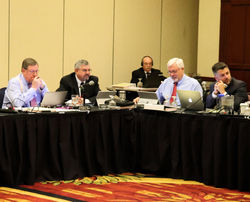
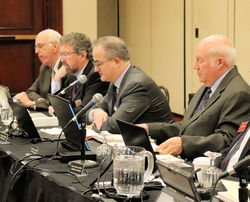
 The Board noted that radio amateurs in Puerto Rico and on the US Virgin Islands were "pressed into immediate service before and during the devastating storms" during the 2017 hurricane season. "The efforts of the local amateur communities continue to support the relief and recovery efforts even now," the Board said, "and the ARRL leadership in each section continues to do extraordinary service to their communities." ARRL established the International Humanitarian Award to recognize "truly outstanding Amateur Radio operators in areas of international humanitarianism and the furtherance of peace."
The Board noted that radio amateurs in Puerto Rico and on the US Virgin Islands were "pressed into immediate service before and during the devastating storms" during the 2017 hurricane season. "The efforts of the local amateur communities continue to support the relief and recovery efforts even now," the Board said, "and the ARRL leadership in each section continues to do extraordinary service to their communities." ARRL established the International Humanitarian Award to recognize "truly outstanding Amateur Radio operators in areas of international humanitarianism and the furtherance of peace." Sponsored by
Sponsored by  its, Antennas and Propagation, Transmission Lines and Impedance Matching, Electronic Fundamentals, Electronic Components, Tests and Test Equipment, RF Techniques, and Practical Station Practices.
its, Antennas and Propagation, Transmission Lines and Impedance Matching, Electronic Fundamentals, Electronic Components, Tests and Test Equipment, RF Techniques, and Practical Station Practices. "The discussion during the Board meeting and the rule change did not address any specific entity," ARRL Radiosport Manager Norm Fusaro, W3IZ, said. "The amendment could allow some additions to the current DXCC List of entities. It's a good thing not only for DXCC, but for all active hams."
"The discussion during the Board meeting and the rule change did not address any specific entity," ARRL Radiosport Manager Norm Fusaro, W3IZ, said. "The amendment could allow some additions to the current DXCC List of entities. It's a good thing not only for DXCC, but for all active hams."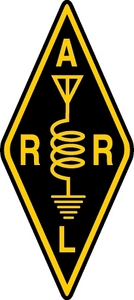 The ARRL Herb S. Brier Instructor of the Year Award honors an ARRL volunteer Amateur Radio instructor or an ARRL professional classroom teacher who uses creative instructional approaches and reflects the highest values of the Amateur Radio community. The award highlights quality of, and commitment to, licensing instruction. Nominations are due by March 15, 2018.
The ARRL Herb S. Brier Instructor of the Year Award honors an ARRL volunteer Amateur Radio instructor or an ARRL professional classroom teacher who uses creative instructional approaches and reflects the highest values of the Amateur Radio community. The award highlights quality of, and commitment to, licensing instruction. Nominations are due by March 15, 2018.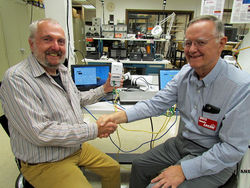
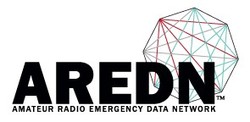 Hare said the ARRL Lab has deployed a local AREDN network at ARRL Headquarters and plans to expand its scope to include nodes on the W1AW towers, with other equipment installed at local police, fire, and hospital communications centers.
Hare said the ARRL Lab has deployed a local AREDN network at ARRL Headquarters and plans to expand its scope to include nodes on the W1AW towers, with other equipment installed at local police, fire, and hospital communications centers..jpg)
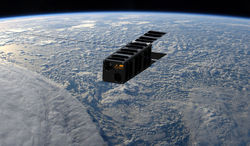
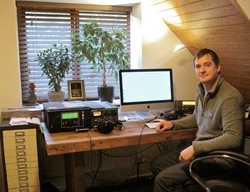
.png)
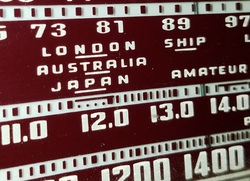 Numbers station transmissions typically consist of a voice "reading out strings of seemingly random numbers," explained Lewis Bush, author of Shadows of the State, a new history of numbers stations. "These are sometimes accompanied by music, tones or other sound effects," he said. The Radio World article quotes Paul Beaumont, an associate editor of
Numbers station transmissions typically consist of a voice "reading out strings of seemingly random numbers," explained Lewis Bush, author of Shadows of the State, a new history of numbers stations. "These are sometimes accompanied by music, tones or other sound effects," he said. The Radio World article quotes Paul Beaumont, an associate editor of 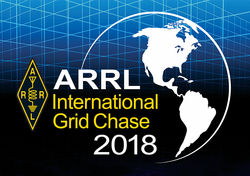 ARRL International Grid Chase (
ARRL International Grid Chase (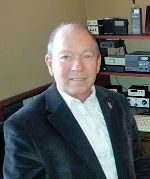 The International Amateur Radio Union (IARU) Region 2 Executive Committee has named Dennis Stice, WI5V, of Oklahoma City, as the new Region 2 HF Beacon Coordinator. Former Region 2 HF Beacon Coordinator Bill Hays, WJ5O, stepped down on January 19, after 10 years in that position. IARU R2 President Reinaldo Leandro, YV5AM, praised Hays for his service. "During this period, Bill has advised the IARU R2 Executive Committee and provided detailed reports on the status of HF beacons in the continent," Leandro said. "The position couldn't have been in better hands."
The International Amateur Radio Union (IARU) Region 2 Executive Committee has named Dennis Stice, WI5V, of Oklahoma City, as the new Region 2 HF Beacon Coordinator. Former Region 2 HF Beacon Coordinator Bill Hays, WJ5O, stepped down on January 19, after 10 years in that position. IARU R2 President Reinaldo Leandro, YV5AM, praised Hays for his service. "During this period, Bill has advised the IARU R2 Executive Committee and provided detailed reports on the status of HF beacons in the continent," Leandro said. "The position couldn't have been in better hands."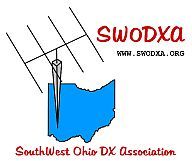 Tickets are Available for the 33rd DX Dinner in Dayton. The SouthWest Ohio DX Association (
Tickets are Available for the 33rd DX Dinner in Dayton. The SouthWest Ohio DX Association (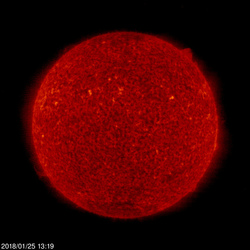 Predicted solar flux is 70 on January 25; 68 on January 26-31; 69 on February 1; 70 on February 2-16; 68 on February 17; 69 on February 18-19; 68 on February 20-26, and 70 on February 27-March 10.
Predicted solar flux is 70 on January 25; 68 on January 26-31; 69 on February 1; 70 on February 2-16; 68 on February 17; 69 on February 18-19; 68 on February 20-26, and 70 on February 27-March 10.







